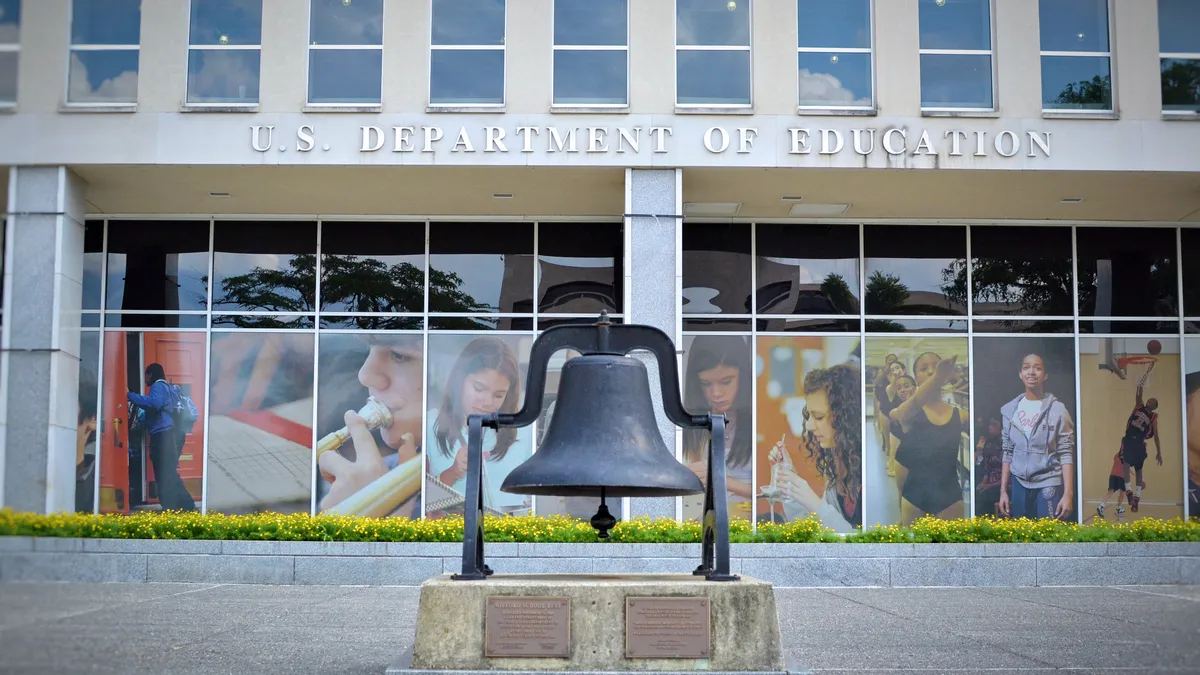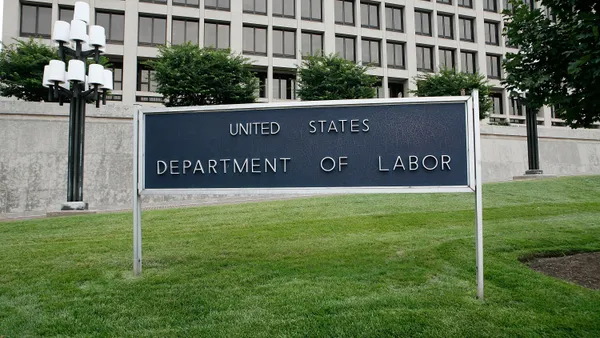Dive Brief:
- A federal commission recommends colleges more thoroughly educate students about their finances by being more transparent about college costs and debt and requiring financial literacy courses.
- The wide-ranging report, from the Treasury Department's U.S. Financial Literacy and Education Commission, calls for institutions to make financial aid offers more straightforward, such as by breaking aid down by type, and to help students identify and connect with their loan servicer.
- More broadly, it encourages colleges to "dedicate staff" to advise students on taking out loans, choosing majors and identifying impediments to graduation so they're better able to repay their debt.
Dive Insight:
The report makes familiar points about college costs and the nation's growing student debt load.
From 2004-05 to 2015-16, the total sum of tuition, fees and room and board for undergraduates at public institutions rose an inflation-adjusted 34%, the report notes. To keep up with those costs, it continues, students took out more debt, with the average borrower today leaving school with $33,000 in loans.
The growing debt burden has also prompted calls for colleges to be more clear with students about the type of aid they are receiving and their repayment obligations. Around 60% of students plan to take out loans for college, according to a recent survey of more than 30,000 students across some 440 institutions.
However, of that group, just 65% say they plan to pay off their loan on time. That's down from about 90% who said the same in 2012.
Financial awareness plays a key role in students' ability to do that. The survey, by edtech company Everfi and AIG Retirement Services, found that only around one-third of respondents took a personal finance course in high school and about one-half said they felt ready to manage their finances.
More than half of respondents said having a plan to pay off their loans and a better understanding of their repayment options would help them feel more prepared to address their student loan debt. As a complicating factor, however, around one-third of respondents said they have more than $1,000 in credit card debt.
Advocates for college access say confusion about financial aid and a lack of guidance means eligible students often leave money on the table that could help reduce their cost of attendance.
In April, the U.S. Department of Education provided guidance on how colleges can word financial aid offer letters to make the type and amount of aid more clear and therefore help learners make better decisions about where to attend. Their recommendations include not calling loans or work-study a "financial aid offer" or "college financing" instead of an "award."
The University of Wisconsin-Madison hopes to bring clarity to its aid awards by embedding researchers in its financial aid office to work with aid officials as they help students figure out the best way to pay for college. Other colleges are closely monitoring student finances and debt payments and offering emergency funds.














